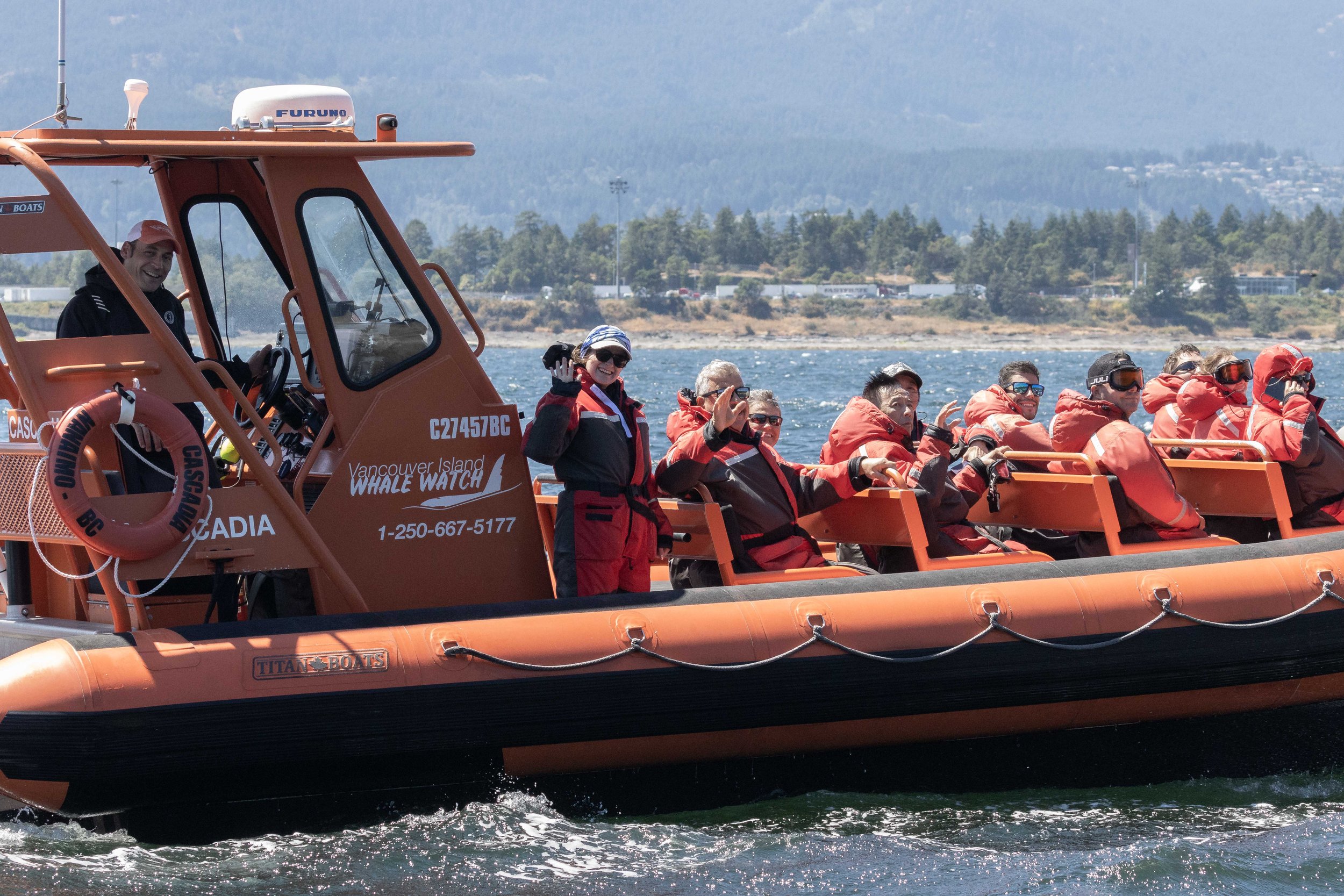July 12, 2024, 10:30 am - Sunny day on the water!
The sun was shining and there was a nice breeze on the water as all three of our boats headed out of the harbour. We headed into the Gulf Islands, one of our favourite spots to watch wildlife. A couple of our boats popped out through Gabriola Pass between Gabriola and Valdes Islands and into the Flat Top Islands.
Just south of this pass is a little place we like to call Stinky Rocks! It was a decently low tide, so plenty of the rocks were exposed. Harbour seals like to haul out on these rocks when they’re exposed like this. Luckily for us, it is peak pupping season for the Harbour Seals here in British Columbia, so there are plenty of little seal pups all over the rocks! At birth, these pups are only around 30 pounds! Adult harbour seals weigh between 150-300 pounds in comparison. It’s been a treat watching more pups appear on the rocks. They will stay with their mom for around a month until they have to go off on their own.
The South end of Stinky Rocks is occupied by a colony of Steller Sea Lions. These guys are the largest sea lion in the world. Females weigh between 500-700 pounds, while the males weigh upwards of 2400 pounds! They can also use their flippers to walk and even run around on land, so we do not recommend getting on their bad side - they can indeed run faster than you! Theoretically, these sea lions should be in Alaska or Northern British Columbia breeding and having their pups right now, but they have decided to stay here for now. That means we get to watch them be their sassy selves for a bit longer!
We left our pinnipeds to their days and headed south in the Strait of Georgia. One of the boats headed back into the Gulf Islands through Porlier Pass while the other continued in the Strait down to Active Pass. After heading to the islands there, we searched the waters for any signs of whales. Unfortunately, none of our boats had any luck. The fun thing about watching whales is that they’re always keeping us on our toes. And while it’s disappointing not to see them, they are wild animals and can do whatever they wish!
We continued in the direction of home but stopped quickly at the bluffs on Gabriola Island. Last year, we noticed a pair of bald eagles nesting in the trees. Bald eagles mate for life, so we hope to see this pair coming back year after year! Also along these bluffs are cormorants. They nest here year-round, and we’re hoping to see their chicks soon! This was the last stop on our tour before we headed back to the harbour.
While we were unable to find any whales today, it was still a lovely day adventuring around the Strait and Gulf Islands, and all our guests received vouchers to come out again for free!
All photos today were taken by Marine Naturalists Hayleigh Hilbert and Lucy Willis.
A new harbour seal pup next to mom. Photo by Lucy Willis
Harbour seals are what we called “true seals”. One characteristic of a true seal is their lack of ears. They just have holes in their heads. Photo by Hayleigh Hilbert
A harbour seal pup only gets 4-6 weeks with mom to grow and learn how to become independent. Photo by Hayleigh Hilbert
A harbour seal checking out the boat. Photo by Hayleigh Hilbert
Steller sea lions enjoying some sun! Photo by Hayleigh Hilbert
Steller sea lions squabbling in the water. Who started the drama? Photo by Hayleigh Hilbert
Steller sea lions trying to get the best spot on the haul out. Photo by Hayleigh Hilbert
Did you know that Steller Sea lions are closely related to bears? Photo by Hayleigh Hilbert
Clearly they had something to fight about! Photo by Hayleigh Hilbert
A Bald Eagle standing guard over her nest. Photo by Hayleigh Hilbert
Cormorants sitting in their nests on the Gabriola bluffs. Photo by Hayleigh Hilbert
Mount Baker is actually an active volcano located in Washington - don’t worry though, it hasn’t erupted 1843. Photo by Hayleigh Hilbert
Cascadia with Captain Sylvain, Naturalist Des, and our guests on board! Can you see yourself? Photo by Hayleigh Hilbert













